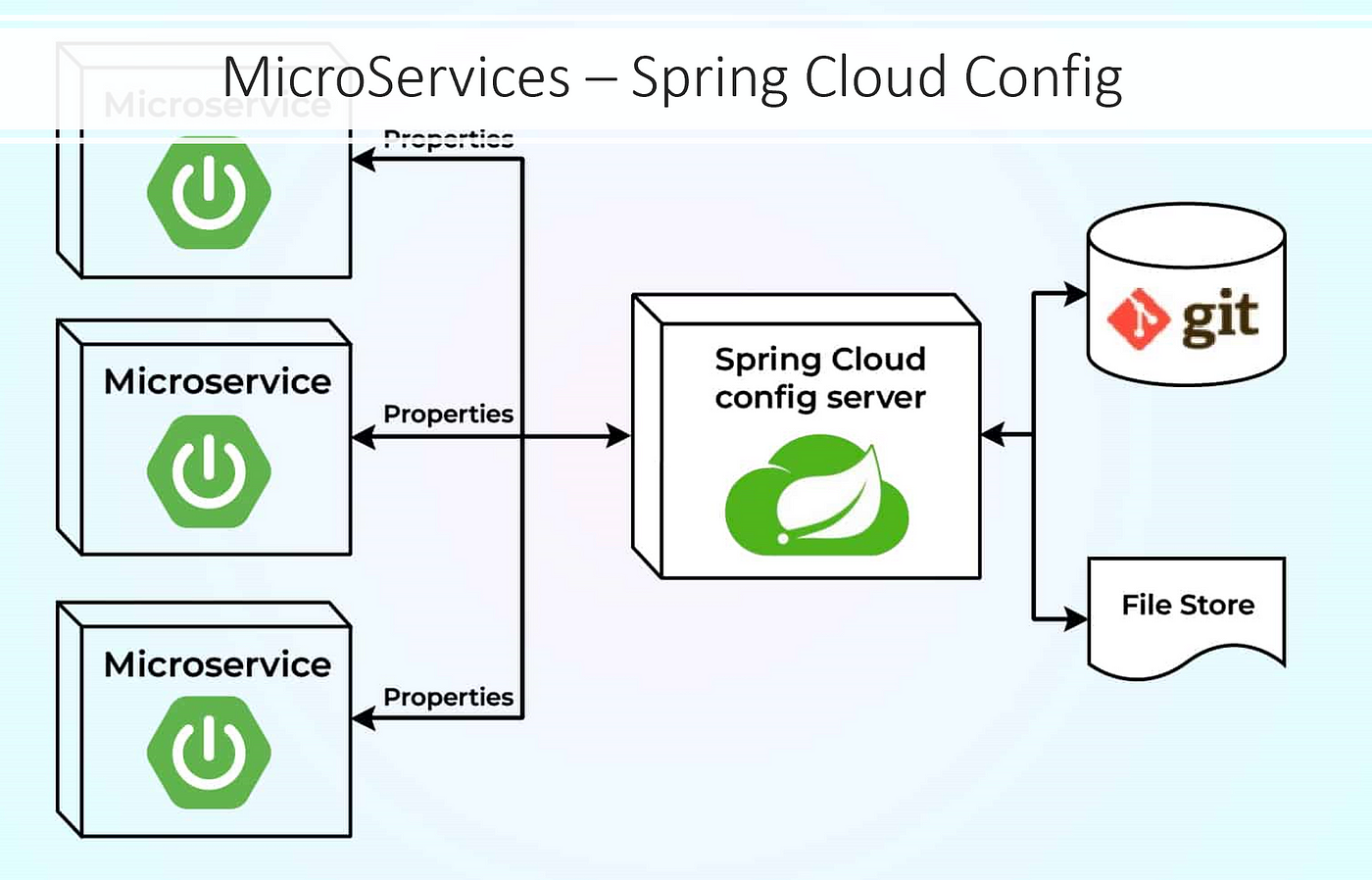Empowering Distributed Systems with Spring Cloud Config
 Uputoori kishore
Uputoori kishore
In the dynamic landscape of distributed systems, managing configurations across numerous applications and environments can be a daunting task. However, with the advent of Spring Cloud Config, this challenge becomes more manageable, offering a centralized solution for externalized configuration. Let's delve into how Spring Cloud Config streamlines configuration management, from server setup to integration with microservices.
Centralization for Seamless Management
At the heart of Spring Cloud Config lies its ability to centralize configuration management. This is achieved through two fundamental components: a robust data store and a dedicated server.
Data Store: Spring Cloud Config relies on a designated data store tailored to handle configuration data efficiently. This store ensures durability, version control, and potential access control, safeguarding configuration integrity.
Configuration Server: Acting as the custodian of configuration data, the server orchestrates its management and distribution across various applications. This centralization simplifies administration, allowing seamless updates and consistency across environments.
Setting Up the Config Server
To kickstart the configuration journey, one must first establish the Config Server. This involves configuring dependencies and defining properties within the application.yml file.
<dependencies>
<dependency>
<groupId>org.springframework.cloud</groupId>
<artifactId>spring-cloud-config-server</artifactId>
</dependency>
</dependencies>
spring:
application:
name: "ConfigServer"
profiles:
active: native
cloud:
config:
server:
native:
search-location: "classpath:/config"
server:
port: 8071
By specifying the search location for configuration files, such as classpath:/config, activating the native profile, the Config Server becomes operational, ready to serve configuration data.
Integration with Microservices
The true power of Spring Cloud Config manifests when integrated seamlessly with microservices. By adding the appropriate dependencies and version management, microservices can leverage the centralized configuration effortlessly.
<properties>
<java.version>17</java.version>
<spring-cloud.version>2023.0.0</spring-cloud.version>
</properties>
<dependencies>
<dependency>
<groupId>org.springframework.cloud</groupId>
<artifactId>spring-cloud-starter-config</artifactId>
</dependency>
</dependencies>
<dependencyManagement>
<dependencies>
<dependency>
<groupId>org.springframework.cloud</groupId>
<artifactId>spring-cloud-dependencies</artifactId>
<version>${spring-cloud.version}</version>
<type>pom</type>
<scope>import</scope>
</dependency>
</dependencies>
</dependencyManagement>
By incorporating these dependencies and managing versions effectively, microservices seamlessly fetch configurations from the centralized Config Server, ensuring consistency and reliability across the ecosystem.
Accessing Profiles with Ease
Spring Cloud Config simplifies profile management by providing easy access to properties via appropriate URLs. Whether it's fetching configurations for development, testing, or production environments, accessing the desired profile is straightforward, thanks to the intuitive URL structure facilitated by the Config Server.
Conclusion:
Spring Cloud Config revolutionizes configuration management in distributed systems. By centralizing configuration data and seamlessly integrating with microservices, it empowers organizations to navigate the complexities of distributed architectures with confidence and efficiency. With Spring Cloud Config, configuration management becomes a streamlined, cohesive process, laying a robust foundation for scalable and resilient distributed systems.
Subscribe to my newsletter
Read articles from Uputoori kishore directly inside your inbox. Subscribe to the newsletter, and don't miss out.
Written by

Uputoori kishore
Uputoori kishore
The individual, holding a Master's degree and Oracle Certified Associate Java developer status, demonstrates expertise in RESTful API design, performance optimization, and database management. Proficient in Java, JavaScript, Spring Boot, Angular, and microservices, they actively engage in hackathons and online courses to enhance their skills. Committed to continuous learning, they remain adaptable and motivated in their professional development journey.